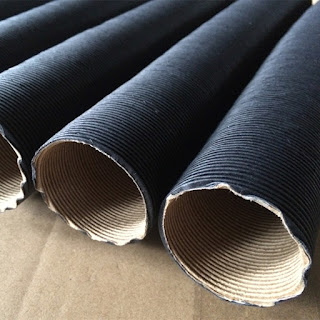Can you explain the installation process of a silicone fire sleeve and provide any tips or best practices for ensuring proper application?
The installation process of a silicone fire sleeve typically involves the following steps, along with some tips and best practices for ensuring proper application:
Preparation: Begin by preparing the components you intend to protect with the silicone fire sleeve. Clean the surfaces of the cables, hoses, or wires to ensure they are free from dirt, grease, or debris. This will allow for better adhesion and ensure a secure fit.
Measuring and Cutting: Measure the length of the component that needs to be covered and cut the silicone fire sleeve to the appropriate size. It's important to leave a small overlap on each end for a proper seal.
Opening the Sleeve (if applicable): If the fire sleeve has a split or zipper design, open it along the length to create a slot. This allows you to wrap it around the component easily.
Sliding the Sleeve: Slide the silicone fire sleeve over the component, ensuring that it covers the entire length to be protected. If necessary, you can use a lubricant or soapy water to help the sleeve slide smoothly over the component.
Securing the Ends: Once the sleeve is in place, make sure to secure both ends to create a tight seal. Some sleeves come with built-in closure mechanisms like hook-and-loop fasteners or zippers, while others may require the use of high-temperature adhesive or stainless-steel ties. Follow the manufacturer's instructions for the specific method recommended for securing the ends.
Overlapping and Sealing: If you have multiple sections of silicone fire sleeve to install, ensure there is a slight overlap between the adjacent sections. This helps maintain continuity and provides better protection. Use high-temperature adhesive or stainless-steel ties to secure the overlapping areas and prevent any gaps.
Inspect and Test: After installation, thoroughly inspect the fire sleeve to ensure it is properly installed and securely fastened. Check for any gaps, loose ends, or areas that require additional sealing. Once the inspection is complete, you can conduct a test run to ensure the protected components function correctly.
Here are some additional tips and best practices to consider:
Follow the manufacturer's instructions and guidelines for the specific silicone fire sleeve you are using.
Use appropriate personal protective equipment (PPE) such as gloves and eye protection during installation to prevent any injuries.
Avoid stretching the sleeve excessively during installation, as it can compromise its integrity and effectiveness.
Ensure the sleeve is not excessively tight or loose around the component. A snug fit is necessary for proper protection.
If installing multiple sleeves, ensure they are aligned and positioned correctly for a uniform and professional appearance.
Periodically inspect the fire sleeve for any signs of wear, damage, or loosening. Replace or repair as necessary to maintain optimal protection.
By following these installation tips and best practices, you can ensure the proper application of a silicone fire sleeve and maximize its effectiveness in protecting your components in high-temperature environments.
 |
| Can you explain the installation process of a silicone fire sleeve and provide any tips or best practices for ensuring proper application? |
 |
| Can you explain the installation process of a silicone fire sleeve and provide any tips or best practices for ensuring proper application? |



Rubber Bellows - One of the leading EPDM Rubber Gaskets manufacturers and suppliers in Mumbai, India. EPDM rubber gaskets designed for excellent resistance to weather, ozone, and temperature extremes, making them ideal for outdoor and industrial sealing applications.
ReplyDelete